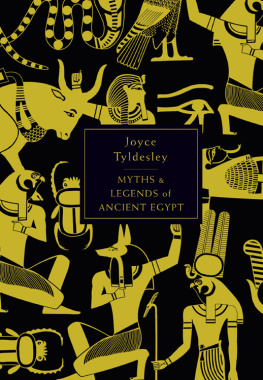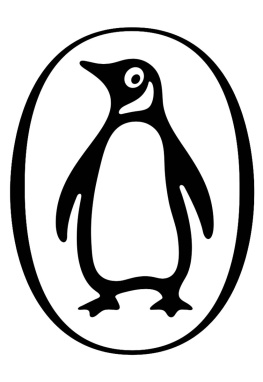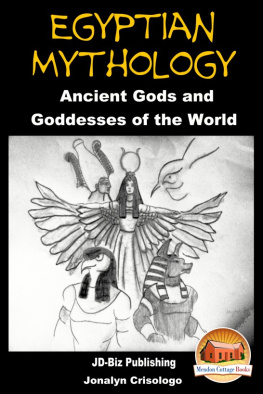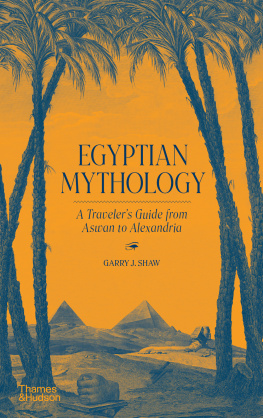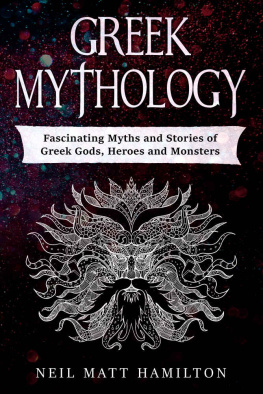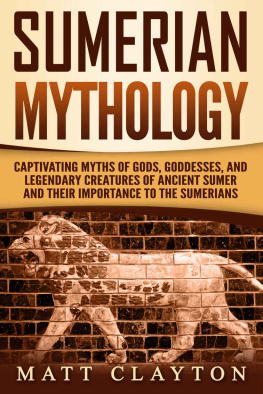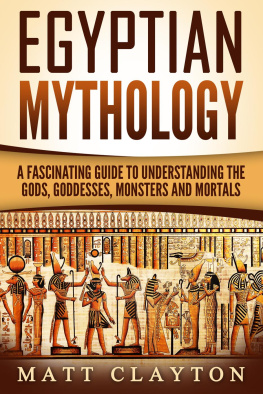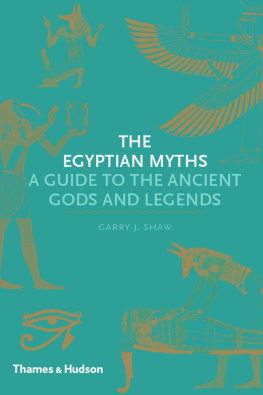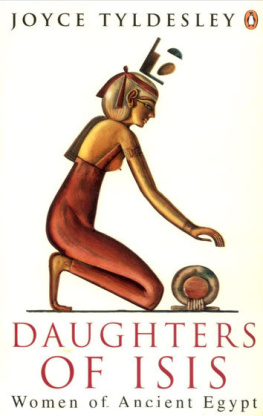POSTSCRIPT
This book has covered the myths and legends told by the Dynastic Egyptians between the unification of the country in approximately 3100 BC and the death of Cleopatra VII, and Egypts absorption by Rome, in 30 BC . It has included Egyptian tales recorded by Classical authors, but excluded the tales told about Egypt by other cultures. The Biblical story of Moses in the bullrushes and the Exodus from Egypt, for example, is omitted because, although it concerns Egypt, it is neither a historically documented event nor an Egyptian legend.
In the 2,000 years since Cleopatras death, Egypts myths and legends have continued to evolve. The more orthodox of the post-dynastic myths concern the established pantheon and, in particular, the mythology of Isis who is still worshipped today. The more spectacular tales of royal curses, booby-trapped tombs and supernatural revenge have tended to centre on the 1922 discovery of the tomb of Tutankhamen. Regretfully, these tales belong to a different book.
DRAMATIS PERSONAE
A GLOSSARY OF THE MAJOR GODS AND HEROES MENTIONED IN THIS BOOK
Their propensity to separate and combine makes it difficult to count Egypts gods, but it has been estimated that there were approximately 1,500 named deities during the 3,000 years of the dynastic period. Given that some gods claimed a different name for every day of the year this is, if anything, an underestimate. Already large at the start of the dynastic age, the pantheon slowly but surely expanded as foreign deities were welcomed into the fold. Meanwhile, the state gods waxed and waned in popularity. Horus (Early Dynastic Period), Re (Old Kingdom) and Amen (New Kingdom) each served for a time as Egypts principal god. Only once, during the short-lived Amarna Age, was there any attempt to restrict the number of gods; this experiment lasted for less than twenty years.
Agathoi Daemones: the good spirits who took the form of snakes to protect the city of Alexandria and bless its inhabitants.
Ahwere: the dead heroine of the Late Period tale of Setne I.
Akar: an ancient earth god whose two sphinx-like heads faced away from each other.
Akhenaten: the 18th Dynasty pharaoh whose devotion to the Aten led him to ban many of Egypts traditional gods and myths.
Alexander the Great: the conqueror who developed his own legends both within and outside Egypt.
Amaunet: the female counterpart and consort of Amen, and one of the Ogdoad of Hermopolis Magna.
Amen: the hidden one. An extremely powerful creator deity and member of the Ogdoad of Hermopolis Magna, who became the god of Egypts New Kingdom empire.
Amenemhat I: a murdered 12th Dynasty pharaoh, who appears to have left a helpful account of his own assassination.
Amenhotep III: the divine son of Amen-Re, who told the story of his own divine birth in the Luxor temple.
Amenhotep son of Hapu: an 18th Dynasty sage and architect, who was worshipped after death as a divine healer in the Theban area.
Amen-Kematef: the first primeval god, who took the form of a snake to fertilize the first egg.
Amen-Min: an ithyphallic fertility god of awesome potency.
Amen-Re: the immensely powerful fusion of the northern sun god Re and the southern warrior god Amen.
Ammit: the eater of the damned, equipped with the head of a crocodile, the foreparts and body of a lion or leopard and the hindparts of a hippopotamus.
Anath: the daughter of the Canaanite god El, who arrived in Egypt during the late Middle Kingdom. As the woman who acts like a warrior she became a loyal daughter who protected both Re and all of Egypts kings with her axe, spear and shield.
Andjety: the obscure god of Busiris, whose tale of resurrection was usurped by Osiris.
Ani: the deceased owner of a beautifully decorated Book of the Dead.
Anti: a falcon-headed god, who committed an awful crime and suffered severe punishment.
Anubis: (1) the elder of the eponymous Two Brothers in a 19th Dynasty tale of lust, betrayal and wicked women; (2) the jackal-headed guardian of the cemeteries; and (3) the scientist who developed the art of mummifiction.
Anukis: a divine huntress, who wears a distinctive feathered headdress.
Apis bull: the earthly representative of Ptah.
Apophis: a malevolent serpent, who threatened to stop the night-boat of Re.
Astarte: the equivalent of the Babylonian goddess Ishtar and the Sumerian Inanna, associated with horses and chariots.
Aten: the mythless solar disk worshipped by Akhenaten and (perhaps under duress) his court.
Atum: lord of totality. The creator god of Heliopolis, who became the ageing sun.
Babi: a baboon god, who both feasted off the entrails of the dead and helped the deceased to regain their sexual powers.
Banebdjedet: a ram god of great sexual prowess, who represented the souls of Osiris, Re-Atum, Shu and Geb.
Bastet: lady of the bas, or perfume jar. Initially the fierce lioness who nursed the dead king, Bastet later became a mild-mannered cat or cat-headed deity who protected mothers and pregnant women.
Bat: female spirit; an early cow goddess.
Bata: the younger of the eponymous Two Brothers in a 19th Dynasty tale of lust, betrayal and wicked women.
Benu: a shining solar bird with a phoenix-like ability to regenerate.
Bes: a dwarf demi-god, who brought comfort and protection to mothers and children, and who also offered protection against snakes.
Bestet: the female counterpart of the dwarf Bes.
Buchis bull: the earthly representative of Montu.
Cleopatra VII: Egypts last queen. During her lifetime she was worshipped as the living incarnation of Isis; after death she developed (and still continues to develop) her own legends.
Dionysos: an eastern god offering a promise of resurrection to the faithful, who may be equated with the Egyptian Osiris.
Djadja-em-Ankh: a priest and magician who features in the Papyrus Westcar.
Djedi: a powerful living magician who visited the 4th Dynasty court of Khufu to perform the awesome feats of magic related in Papyrus Westcar.
Djehuty: an overseer of the army of Tuthmosis III, who is credited with bringing a surprising and successful end to the siege of Joppa.
Djehuty-Nakht: the unscrupulous villain in the Tale of the Eloquent Peasant.
Djoser: a real 3rd Dynasty king who features in the fictional Papyrus Westcar and in the fictitious Famine Stela.
Doomed Prince: the hero of an 18th or 19th Dynasty fantasy, who married the beautiful daughter of the Prince of Naharin.
Eye of Atum ( or Eye of Re): the fierce daughter of the creator god, who took the form of the uraeus to protect her father. This role may be played by any one of several solar goddesses.
Eye of Re: see .
Falsehood: the villain in the Tale of Truth and Falsehood.
Four Sons of Horus: the deities who guarded the organs removed from the body during mummification. They are the human-headed Imseti (guardian of the liver), the baboon-headed Hapy (lungs), the dog-headed Duamutef (stomach) and the falcon-headed Qebehsenuef (intestines).

